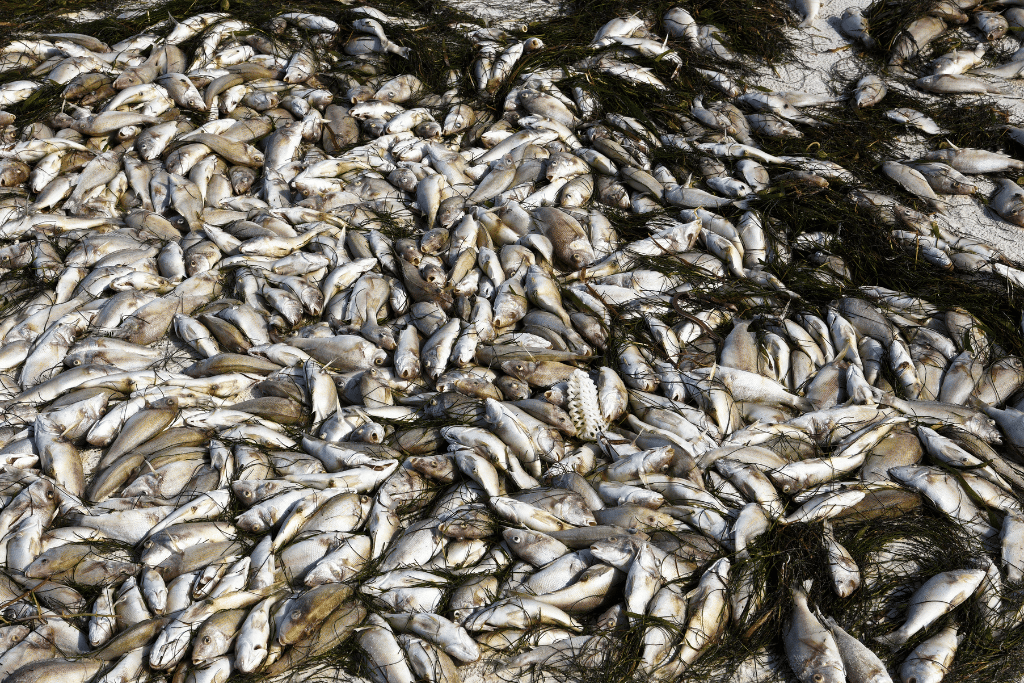After days of research, scientists found that a significant overgrowth of rare toxic algae linked to climate change is likely to be behind the death of tonnes of fish in the river Oder since late July.
—
Very rare and highly toxic algae linked to industrial pollution might be behind the mass fish die-off in the river Oder, scientists say.
Since late July, tonnes of dead fish have been found in the river Oder, in the proximity of the village of Widuchowa in western Poland, not far from the border with Germany. In Germany alone, approximately 36 tons of fish were killed in just a few weeks, according to Environment Minister Steffy Lemke.
An analysis of fish conducted by the Leibniz Institute of Freshwater Ecology and Inland Fisheries (IGB) led to the discovery of the rare golden algae – known as Prymnesium parvum – in all samples taken from the river in recent weeks. Lab tests also showed high levels of salinity in the river’s water.
The golden algae produce several toxins. Ichthyotoxin in particular affects gill-breathing organisms such as fish, amphibians, and some species of plankton.
Elisabeth Varga from the University of Vienna, who led the analysis of the IGB samples, said that “When this specific type of algae is present in very large quantities, as is the case in the Oder samples, very high toxin concentrations must also be assumed.”
Water conditions such as high salinity levels, sulphate, and chloride, positively affect these algae’s development. For this reason, several scientists involved in researching the mysterious die-off are now convinced that climate change could have played a crucial role, given that higher temperatures lead to more evaporation from inland waters as well as higher salinity levels.
“Low water levels […] result in an increase in concentration, because adverse substances are transported in a much smaller volume of water. This extreme state is a major stressor for fish communities. During these phases, many creatures are already fighting for survival — and if, then, other hazards such as toxic algal blooms or chemical contamination are added to existing pollution, this can soon destroy entire freshwater ecosystems,” explained IGB scientist Tobias Goldhammer.
The mass die-off in the river Oder comes as Germany and other European countries experience historic and in some areas unprecedented heatwaves, drying up rivers and significantly warming their waters. If nothing was done to decrease salt levels, such toxic overgrowths could occur again during a hot, dry summer, Goldhammer said.
You might also like: River Rhine Set to Become Virtually Impassable, Threatening European Trade


















